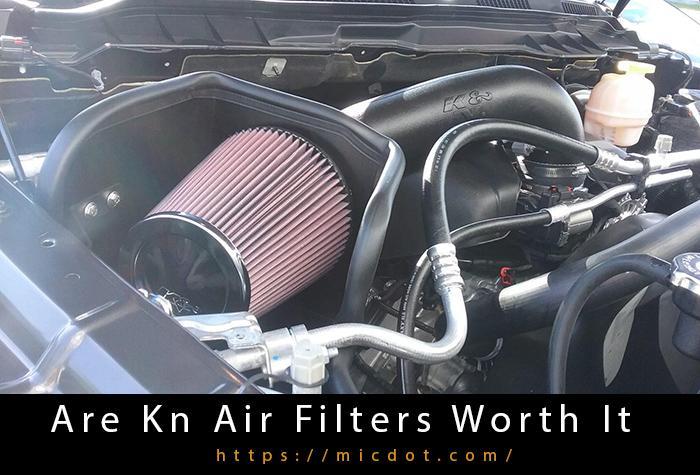When engine oil leaks into the combustion chamber, it smothers the spark plug and causes oil fouling. The spark plug cannot travel through space if this occurs. It’s understandable if you have no prior experience with spark plugs to ask whether this is normal or if you should take action right away. Hence, you may wonder:
Is it bad if you have an oil-stained spark plug? What should you do if you ever find yourself in this situation? Engine wear is the most common cause of an oil-stained spark plug. Because oil should never cover the spark plug, it’s a bad idea. The problem must be solved so that your engine does not have any issues. A problem with your engine can get worse if you don’t address it right away.
You Are Watching: Oil Fouled Spark Plug: Symptoms And Fix Updated 04/2024
As a novice, oil fouling can be frightening and intimidating. However, all it need is a proper solution before you can proceed. But if you don’t address it, you’ll only create more problems for yourself in the future.
A thorough examination of an oil-fouled spark plug will be presented in this article. This way, you’ll know what to do if it ever occurs to you, and you’ll be prepared. Also, it can assist you in preparing for and avoiding it.
Let’s get started right away!
What Does an Oily Spark Plug Mean?
To begin, it’s important to know what an oily or oil-fouled spark plug means. So, what does it all mean? An greasy spark plug indicates an excessive amount of oil in the fuel.
Also, if your spark plug is oily, your piston rings may be deteriorating. It usually occurs as a result of deterioration of the valve seals and stems. Oil can leak through these valves and coat the spark plug when they are closed.
The oil in a spark plug is frequently a result of worn valve tip gaskets, leaking O-rings, or worn piston rings.
You need to fix your engine as quickly as possible, thus an oily spark plug signifies you have problems with your engine from this standpoint. As a result, if you notice any oil on your spark plugs, it’s time to replace them. Additional checks should be made for oil leaks in the valves and the cylinders.
Is It Normal to Have Oil on Spark Plugs?

When a spark plug has some oil on it, it indicates that your engine has certain problems that need to be fixed..
As I indicated before, worn-out spark plug tube seals or covers are the most common cause of these issues.
In most cases, the oil does not actually coat the spark plug. As a result, the oil condenses in the cylinder’s bottom, where the spark plug is located. Because of this, when you remove the spark plug, it will be covered in oil.
Therefore, an oily spark plug signals a problem with your engine and should be fixed immediately. This means that if you see any oil on your spark plugs, you should get new ones right away. As a final precaution, check the valve and cylinder for oil leaks.
Are oil fouled spark plugs dangerous?
In fact, the amount of oil created by combustion produces back pressure in the exhaust, but it is not enough to blow a hole in an exhaust system. A lack of power could indicate significant engine damage caused by piston ring wear, therefore you should visit a professional immediately if you notice this.
What Happens When Oil Leaks Into the Spark Plugs?
It’s bad for the engine if oil leaks into the spark plugs, which might cause troubles.
As an example, oil in the spark plug wells can cause misfires, increased oil consumption, and blue exhaust, all of which affect the engine’s performance.
Read More : How Much Does It Cost To Tint Car Windows Updated 04/2024
In extreme cases, it can trigger an engine fire. The spark plug and other engine components should be checked if these symptoms are present in the vehicle.
Your engine will run smoothly and there will be no oil leaks in the future as a result of this check.
Can I Drive With Oil in My Spark Plugs?
The extreme oil-fouling effects of driving with oil in your spark plugs necessitate this cautionary measure. You may be able to drive with oil-stained spark plugs, but it doesn’t imply that doing so is risk-free.
The presence of oil in a spark plug can lead to significant damage to numerous engine components, including bent or broken valves and pistons, as well as damage to the head gasket.
Leaving it alone might result in decreased engine performance and perhaps a fire if it heats up too much.
As a rule of thumb, if you see oil in your spark plug, stop your engine or refrain from driving your vehicle.
Oil Fouled Spark Plugs Symptoms
You may always inspect your car for indicators or effects produced by oil-fouled spark plugs if you want to know if you have them.
In most cases, oil fouling occurs when oil reaches the combustion chamber and reaches your spark plugs. Oil deposits can cover the spark plug and prevent the spark from reaching the gap, therefore preventing the engine from starting.
To determine whether or not your spark plug is fouled with oil, here are some of the items you should look for.
Oil deposits in spark plugs
A tarnished spark plug has a shiny, black appearance. Regardless of the amount of oil in the combustion chamber, deposits might form on the ceramic, shell, or tip.
Engine oil scent in spark plugs
The plug should smell like engine oil if you’re unsure if the fouling is caused by carbon or oil. PCV system, piston rings, valve stem seals, or the PCV system could be the source of the oil (positive crankcase ventilation).
It is possible to detect leaky piston rings by doing a leak-down test. Additionally, if one of the cylinders has oil fouling, a comparative pressure check may help identify structural problems with that cylinder.
PCV system issues
Today’s engines are plagued by defective PCV systems, which contribute to oil fouling. These systems are more than just a spring-loaded check valve.
It is possible to separate oil from crankcase fumes and control when the engine uses the fumes electrically, thanks to modern technologies.
Freezing valve
There are certain PCV systems that come with a heater so that the valve doesn’t freeze when moisture is present.
There may be an increase in crankshaft tension if a valve freezes. The spark plug’s tip may also be forced past the valve covers by this.
Failing turbo-charger
Spark plug oil clogging can also be caused by a defective turbocharger. Turbine shaft seals are tough, although they can be damaged by high temperatures or low oil quality. It is possible for the lubricating oil to reach the pressurized inlet and then the cylinder head through the shaft.
Oil Fouled Spark Plug Fix
Read More : 2016 SUBARU WRX Issues Updated 04/2024
To mend an oil-fouled spark plug, you can either hire an expert or perform the repair yourself. If the latter is your intention, you can proceed as follows:
Use a carb cleaner.
Carb cleaner can be used to remove deposits from a fouled spark plug. Use a brass wire brush to get rid of obstinate stains. Don’t be alarmed, because the brass will not hurt the electrode.
As an additional precaution, you should check for a fouled spark plug. As a general rule of thumb, you can do the following checks:
Drive your vehicle at high speeds.
Run your car at freeway speeds for 15 to 20 minutes before slowing down. This procedure should clear the plugs if the fouling isn’t due to anything unusual.
Check if it’s worn out and fix it.
If the spark plugs continue to misfire due to fouling, it is probable that they are filthy or worn. The spark plugs should be inspected and cleaned or replaced if necessary.
Spark plug cleaning devices, which sandblast the tip of the spark plug to remove sediments, can be found in car parts stores.
Make sure no deposit or particle remains.
Before putting your spark plugs in your engine after using one of these devices, make sure there is no sand caught between the electrodes and the shell.
Make sure that the distance between the spark plug electrodes is restored to the manufacturer’s specifications as well (which needs a spark plug gapping equipment or feeler measure).
How often does an oil fouled spark plug happen?
With significant carbon accumulation on the piston rings, an oil-stained spark plug is likely to form in an automobile engine. Within a radius of around 50k miles, this accumulation occurs (which is considered low mileage for most cars).
It is possible for some engines to last up to 100k miles before developing this issue. Speed up the process by driving your car more frequently and aging the vehicle.
To prevent oil from entering the combustion chamber, a poorly designed engine may have too much room between the piston and cylinder wall. Check out this video to see if you have a problem with your timing chains or guides.
Which cars are more prone to oil-fouled spark plugs than others?
A carburetor with a straight-thru design Air/fuel mixture is drawn in through a venturi as part of the straight atmospheric side fuel injection procedure. Venturis have a blast pipe attached to the end of them for this.
Internal combustion engines employ a carburetor (sometimes referred to as an air meter) to mix and supply fuel for combustion. Fuel is dispensed in proportion to the amount of air entering the cylinders.
It’s possible to have a carburetor with either a downdraft or an updraft design. There are certain stationary engines that use an updraft carburetor, as well as practically all vehicles.
The air/fuel mixture is drawn in through a venturi in the direct atmospheric side fuel injection. This is accomplished by the use of a blast pipe attached to the venturi’s output.
An internal combustion engine’s carburetor (also known as an air meter) is a device that mixes and delivers fuel for combustion. Fuel is dispensed in proportion to the amount of air entering the cylinders. It’s possible to have a carburetor with either a downdraft or an updraft design.
Conclusion
This signifies that your engine needs to be repaired because an oil-fouled spark plug is not a good sign. As a result of the combustion chamber oil entering and reaching your spark plugs, oil fouling occurs. The spark plug might become clogged with oil deposits, preventing the spark from advancing through the gap.
This problem has the potential to worsen if ignored. So, as a general guideline, get it looked out as soon as you can. It is possible to avoid numerous issues with your car by doing regular maintenance on your spark plugs.
Sources: https://micdot.com
Category: Car










